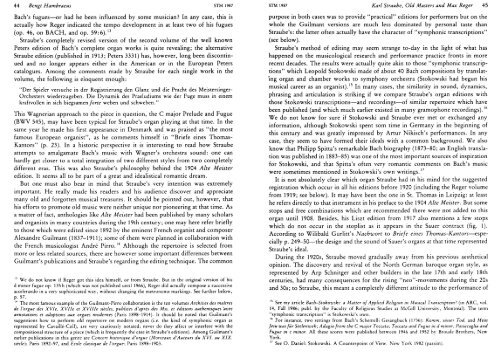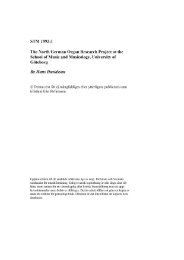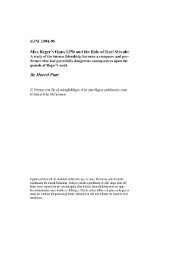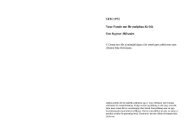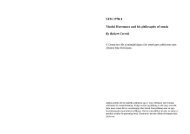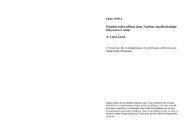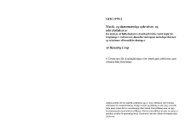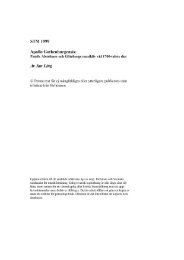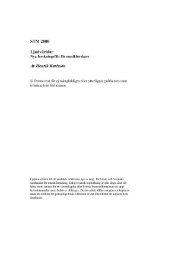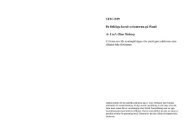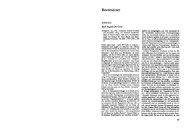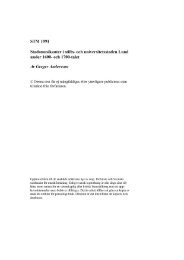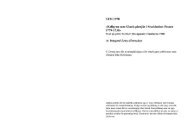You also want an ePaper? Increase the reach of your titles
YUMPU automatically turns print PDFs into web optimized ePapers that Google loves.
Bach’s fugues— or had he been influenced by some musician? In any case, this is<br />
actually how Reger indicated the tempo development in at least two of his fugues<br />
(op. 46, on BACH, and op. 59:6).13<br />
Straube’s completely revised version of the second volume of the well known<br />
Peters edition of Bach’s complete organ works is quite revealing; the alternative<br />
Straube edition (published in 1913; Peters 3331) has, however, long been discontin-<br />
ued and no longer appears either in the American or in the European Peters<br />
catalogues. Among the comments made by Straube for each single work in the<br />
volume, the following is eloquent enough:<br />
“Der Spieler versuche in der Registrierung den Glanz und die Pracht des Meistersinger-<br />
Orchesters wiederzugeben. Die Dynamik des Praeludiums wie der Fuge muss in einem<br />
kraftvollen in sich biegsamen forte weben und schweben.”<br />
This Wagnerian approach to the piece in question, the C major Prelude and Fugue<br />
(BWV 545), may have been typical for Straube’s organ playing at that time. In the<br />
same year he made his first appearance in Denmark and was praised as “the most<br />
famous European organist”, as he comments himself in “Briefe eines Thomas-<br />
Kantors’’ (p. 23). In a historic perspective it is interesting to read how Straube<br />
attempts to amalgamate Bach’s music with Wagner’s orchestra sound: one can<br />
hardly get closer to a total integration of two different styles from two completely<br />
different eras. This was also Straube’s philosophy behind the 1904 Alte Meister<br />
edition. It seems all to be part of a great and idealistical romantic dream.<br />
But one must also bear in mind that Straube’s very intention was extremely<br />
important. He really made his readers and his audience discover and appreciate<br />
many old and forgotten musical treasures. It should be pointed out, however, that<br />
his efforts to promote old music were neither unique nor pioneering at that time. As<br />
a matter of fact, anthologies like Alte Meister had been published by many scholars<br />
and organists in many countries during the 19th century; one may here refer briefly<br />
to those which were edited since 1892 by the eminent French organist and composer<br />
Alexandre Guilmant (i 837-1 91 i); some of them were planned in collaboration with<br />
the French musicologist André Pirro. 14 Although the repertoire is selected from<br />
more or less related sources, there are however some important differences between<br />
Guilmant’s publications and Straube’s regarding the editing technique. The common<br />
13 We do not know if Reger got this idea himself, or from Straube. But in the original version of his<br />
d minor fugue op. 135b (which was not published until 1966), Reger did actually compose a successive<br />
accelerando in a very sophisticated way, without changing the metronome markings. See further below,<br />
p. 57.<br />
14 The most famous example of the Guilmant-Pirro collaboration is the ten volumes Archives des maîtres<br />
de l’orgue des XVIe, XVIIe et XVIIIe siècles, publiées d’après des Mss. et éditions authentiques ‘avec<br />
annotations et adoptions aux orgues modernes (Paris 1898-1914). It should be noted that Guilmant’s<br />
suggestions how to perform old repertoire on modern organs (i.e. the kind of symphonic organ as<br />
represented by Cavaillé-Coll), are very cautiously notated; never do they affect or interfere with the<br />
compositional structure of a piece (which is frequently the case in Straube’s editions). Among Guilmant’s<br />
earlier publications in this genre are Concert historique d’orgue (Morceaux d’Auteurs du XVI. au XIX.<br />
siècle); Paris 1892-97, and Ecole classique de l’orgue; Paris 1898-1903.<br />
purpose in both cases was to provide “practical” editions for performers but on the<br />
whole the Guilmant versions are much less dominated by personal taste than<br />
Straube’s: the latter often actually have the character of “symphonic transcriptions”<br />
(see below).<br />
Straube’s method of editing may seem strange to-day in the light of what has<br />
happened on the musicological research and performance practice fronts in more<br />
recent decades. The results were actually quite akin to those “symphonic transcrip-<br />
tions” which Leopold Stokowski made of about 40 Bach compositions by translat-<br />
‘ing organ and chamber works to symphony orchestra (Stokowski had begun his<br />
musical career as an organist).15 In many cases, the similarity in sound, dynamics,<br />
phrasing and articulation is striking if we compare Straube’s organ editions with<br />
those Stokowski transcriptions-and recordings-of similar repertoire which have<br />
been published (and which much earlier existed in many gramophone recordings). 16<br />
We do not know for sure if Stokowski and Straube ever met or exchanged any<br />
information, although Stokowski spent som time in Germany in the beginning of<br />
this century and was greatly impressed by Artur Nikisch’s performances. In any<br />
case, they seem to have formed their ideals with a common background. We also<br />
know that Philipp Spitta’s remarkable Bach biography (1 873-80; an English transla-<br />
tion was published in 1883-85) was one of the most important sources of inspiration<br />
for Stokowski, and that Spitta’s often very romantic comments on Bach’s music<br />
were sometimes mentioned in Stokowski’s own writings. 17<br />
It is not absolutely clear which organ Straube had in his mind for the suggested<br />
registration which occur in all his editions before 1920 (including the Reger volume<br />
from 1919; see below). It may have been the one in St. Thomas in Leipzig: at least<br />
he refers directly to that instrument in his preface to the 1904 Alte Meister. But some<br />
stops and free combinations which are recommended there were not added to this<br />
organ until 1908. Besides, his Liszt edition from 1917 also mentions a few stops<br />
which do not occur in the stoplist as it appears in the Sauer contract (fig. i).<br />
According to Wilibald Gurlitt’s Nachwort to Briefe eines Thomas-Kantors-espe-<br />
cially p. 249-50— the design and the sound of Sauer’s organs at that time represented<br />
Straube’s ideal.<br />
During the 1920s, Straube moved gradually away from his previous aesthetical<br />
opinion. The discovery and revival of the North German baroque organ style, as<br />
represented by Arp Schnitger and other builders in the late 17th and early 18th<br />
centuries, had many consequences for the rising “neo”-movements during the 20s<br />
and 30s; to Straube, this meant a completely different attitude to the performance of<br />
15 See my article Bach-Stokowski: a Matter of Applied Religion in Musical Transcription? (in ARC, vol.<br />
14, Fall 1986; publ. by the Faculty of Religious Studies at McGill University, Montréal). The term<br />
“symphonic transcription” is Stokowski’s own.<br />
16 For instance, two settings from Bach’s Schemelli Gesangbuch (i 736): Komm, süsser Tod, and Mein<br />
Jesu was für Seelenweh; Adagio from the C major Toccata; Toccata and Fugue in d minor; Passacaglia and<br />
Fugue in c minor. All these scores were published between 1946 and 1952 by Broude Brothers, New<br />
York.<br />
17 See O. Daniel: Stokowski. A Counterpoint of View. New York 1982 (passim).


